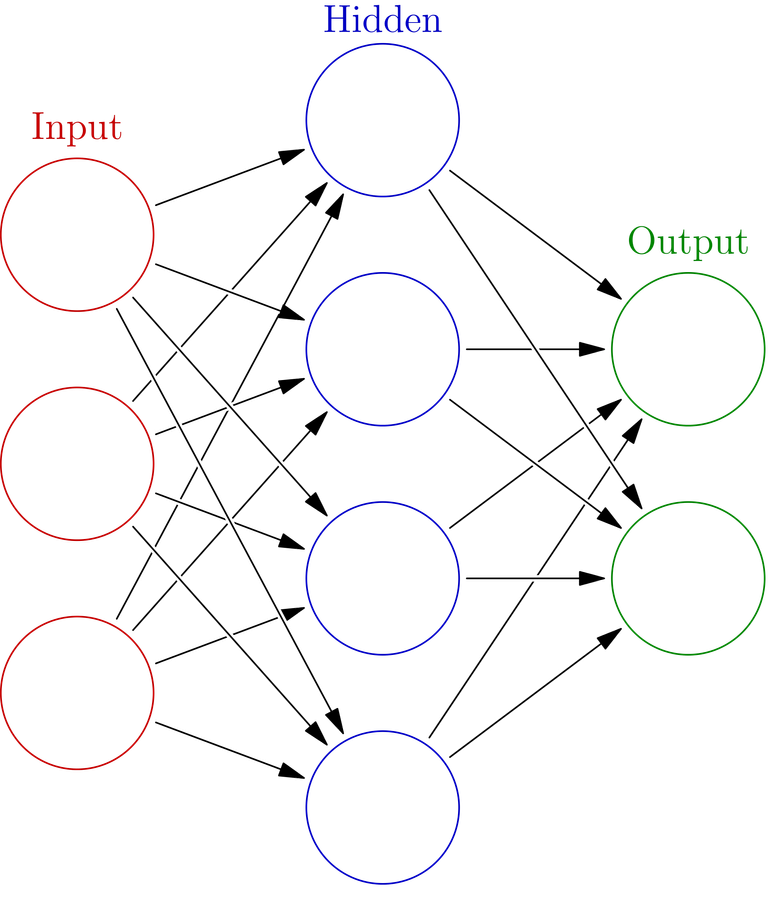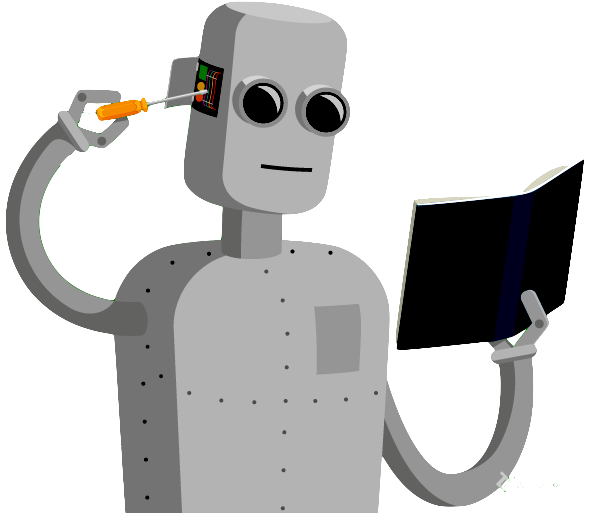When I was in college, I never once considered taking the course to data science in my career growth. Machine learning, artificial intelligence, deep learning - they literally intimidated me. And they are intimidating.
But guess what? That's exactly what makes them interesting to learn, too.
In this post, let me highlight machine learning and neural networks in particular, and why from intimidating, I found them increasingly fascinating (and why you would, too).

Machine learning and neural networks, in particular, have fascinated me lately. Image Source
What the heck is machine learning?
I am a physicist, and embarrassingly enough, I never really got the hang of what machine learning was as an undergraduate. I only ever paid it more heed when I got accepted to work and was assigned tasks which a data scientist has to know how to approach.
The problem? I was (am) not a data scientist.
Google it.
First things first, read about it. And here's what I found out.
Through machine learning algorithms, computers get to learn iteratively through sets of data and infer models without anyone having to explicitly instruct or program the computer how to. Which is interesting, if you'd ask me.
Computers can literally adapt to new data and provide you with excellent results all through a machine learning algorithm and its iterative nature. Imagine computers automatically making reliable decisions for you just by feeding it with so much information even you or I cannot make out.
Huh. It's like teaching your own baby lessons, but he'll end up way smarter than you. Yikes.
There's more to machine learning than just machine learning.
So I found this website that lists down apparently 11 cool ways machine learning is currently being utilized. One of the most awesome I'd read about was the Legal Robot.

Image Source
I'd never heard of it before my intense self-learning of machine learning (I'm a machine learner... get it? Get it?), but Legal Robot actually uses machine learning techniques to help all-legal-things-noob people like us understand legal documents in a language we actually know.
I was amazed at the expanse of how machine learning can be used, and I'm sure, that with as enthusiastic a probing I did, you would be, too (cough Medecision, predictive failure analysis, smart cars, among others cough).
And more.
Going deeper into machine learning, we'll find out that there are actually types of machine learning algorithms. And, going back to the whole point of this post, which made machine learning even more interesting.
Supervised learning.
- From the name itself, this is a supervised technique where the computer is fed with a set of labeled inputs and target outputs. From this, the computer finds patterns and learns from them.
Unsupervised learning.
- Obviously the opposite of supervised learning, in unsupervised learning, we don't teach the computer anything at all. This method is usually used in pattern detection and is useful when us lowly humans don't know what to make out of a particular dataset.
Reinforcement learning.
- The computer learns through experience. Amazing, right? Through iterative trial and error, the machine learns to make the most ideal decision given a previous experience. Uhm, that's it in a nutshell?
Then where do neural networks come in?
Literally, artificial neural networks (ANN) are designed the way our own biological neural networks work. Which will lead us to a whole bunch of jargon, and that's seriously boring. So what makes it interesting?
One, it's how this intricate biological chunk in us...
...became like this simplified, mathematical wonder:

Image Source
How did these ANN come about?
Of course, curious research would lead us to neurophysiologist Warren McCulloch and mathematician Walter Pitts who decided that simple electrical circuits might do the trick in actually explaining how neurons work.
Of course, many others chipped in, thus creating an intimidating network model, which can model and process nonlinear relationships. Amazing, right?
Deeper?
There's nothing too shallow about neural networks. ANNs have a perceptron, which has an inputs, a bias, activation function, and a single output. This is basically illustrated by the image above.
In a perceptron, inputs are multiplied by weights, passed on toward an activation function which could be any function from logistic sigmoid to hyperbolic tangent to more, to finally produce an output. Here is an amazing webpage that discusses artificial neural networks fully (and capably!).

Simple graphical illustration of neural networks. Image Source
Generally, layers between the inputs and the output are called hidden layers. Neural networks become deep when... tadaaaa! The network has more than one layer.
Apparently, deep learning is used to refer to stacked neural networks, so yeah, you get the idea.
Everything automated.
The world is becoming too smart (cough IoT cough smart cities cough). Way too smart, in fact, it's becoming kinda creepy (remember how Google's artificial brain knows how to find videos of cats?).
The world is becoming too smart that many things have become so easy and automated thanks to computers. And there are those that are directly thanks to neural networks. One webpage lists down 8 "inspirational" applications of deep learning.
Most of these listed things were of automation: black and white images to colored, machine translation, and object classification in photographs, among others.
The interesting thing about machine learning in general.
It's growing. It has grown so much and it still keeps going. The challenge is it's hard to keep up. It can get annoyingly complicated. But you know what? Learning things one at a time definitely helps, like how this beautiful article made the backpropagation neural network algorithm seem suddenly "uncomplicated."
Machine learning, AI, deep learning... they lay down a lot of promise. And how they deliver... now that's definitely interesting.



@erangvee very informative post. Thank you! I've also been very interested in AI and machine learning and believe its going to keep growing at an astonishing pace here in the next few years!
Thank you @tspink! I so completely agree with you. AI and machine learning have been evolving at a swift pace, it's hard to keep up.
Machine learning and neural networks is really a big thing!!! I must say, I am enjoying deep learning. If given with the right tools and computiting power, I will be so happy haha I remember ANN being taught at AMAT 150 and never knew back then that when we go deeper.... we can do so much. I love your post :-)
OMG they mentioned it at AMAT 150?! Luckyyy. Never really minded anything AI/ML back then hehe. But now, I completely feel the same way you do. I'm enjoying it, too. Thank you for dropping by @ririgi!!!! 💕
Mommy: bleeding!!!
Kuya: Tita, I would like to become a scientist. Because I want to see micro organisms under a microscope. I would like to be an astronaut because I want to see how earth looks like from outerspace.
And just last night...
I want to become a teacher because i want to teach other children about science and the Bible.
😉
Waw, evolving si Kuya! 😅 Well, he can be a scientist like me, too. 😉
Good, informative and educative post.
AI and neural network is the future and I know it'll be a reality. Tho I'm sometimes scared about it's disadvantages and mistakes. Will it help or mar us? Time will tell.
But it's benefits are enormous.
Thanks for sharing this. I've bookmarked it and I'll do more research on it.
Edit: And oh! Have you ever imagined the benefit that the adoption of neural network will have on steemit?
Thank you, @enolife! I feel the same way sometimes; AI can be scary. Also that time when facebook's AI created its own computer language no human can understand? Daaamn. But you're right. The benefits far outweigh the cons.
Interesting question. I've never once considered adoption of ANN or deep learning on Steemit in general, but I bet it will be interesting. I imagine automatically detecting fraud, scam, and spam. And maybe more? Deep learning holds a lot of promise, but at this point, I'm literally unimaginative. 😂